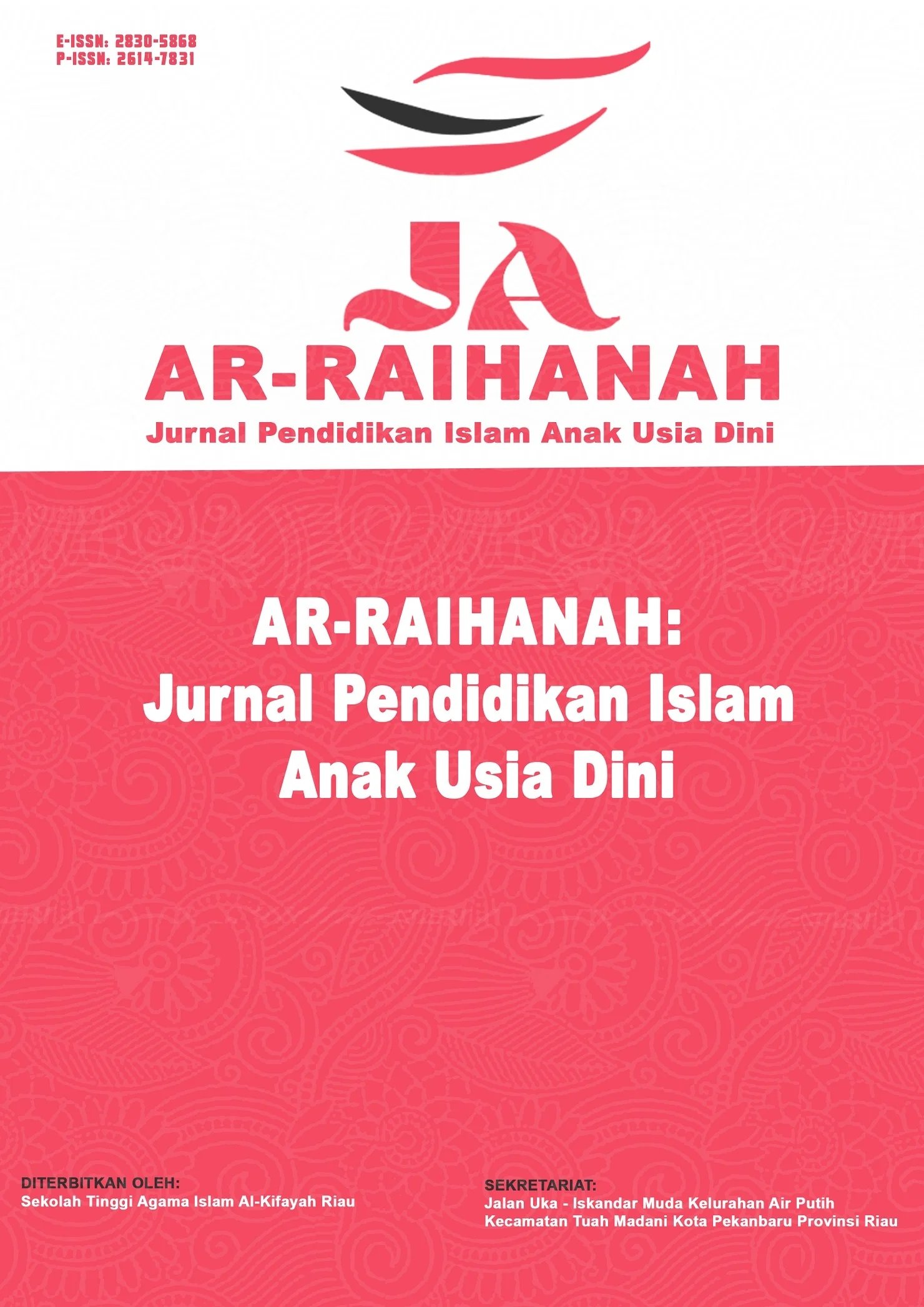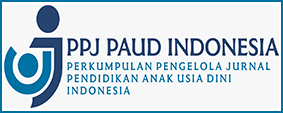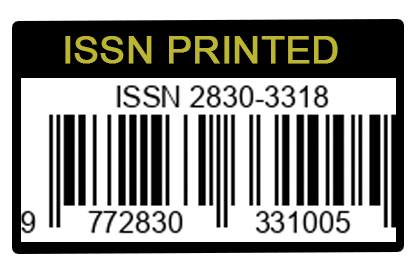Peningakatan Kemampuan Numerasi Awal Anak Usia 5-6 Tahun Melalui Media Turtle Sorting Color
DOI:
https://doi.org/10.53398/arraihanah.v5i1.665Keywords:
Early Numeracy Skills, Early Childhood, Turtle Sorting ColorAbstract
The problem addressed in this study stems from the low early numeracy skills of children aged 5–6 years at TK Perwari 1, Tasikmalaya City. Initial observations revealed that the children struggled to understand basic number concepts, simple arithmetic operations, and object classification based on quantity and color. Learning activities focused primarily on lecture-based methods and the use of worksheets (LKA), which proved less effective in stimulating children’s cognitive development, particularly in early numeracy. This research aims to improve children’s early numeracy skills through the use of the Turtle Sorting Color media a concrete learning tool made from plywood decorated with turtle images, where each turtle’s shell is crafted from used plastic bottles serving as containers for colorful pom-poms. Each turtle is labeled with a number to guide children in grouping pom-poms by color and quantity. The study employed a Classroom Action Research (CAR) approach using the Kemmis and McTaggart model, implemented over two cycles. The research subjects consisted of 15 children from group B at TK Perwari 1. Data collection techniques included observation, documentation, and field notes, analyzed through descriptive qualitative and quantitative methods. Findings revealed a significant improvement in children's early numeracy skills. The average achievement increased from 36.25% in the pre-cycle, to 64.59% in the first cycle, and reached 88.33% in the second cycle. Children became more active, focused, and capable of understanding early numeracy concepts in a concrete and enjoyable manner. This study concludes that the Turtle Sorting Color media is effective as a learning aid to enhance early numeracy skills in children aged 5–6 years. The media offers an innovative alternative aligned with play-based learning approaches in early childhood education
References
Altrichter, H., Kemmis, S., McTaggart, R., & Zuber‐Skerritt, O. (2002). The concept of action research. The Learning Organization, 9(3), 125–131. https://doi.org/10.1108/09696470210428840
Arvy, B. R. (2024). Mengembangkan Numerasi Anak Usia Dini Melalui Permainan Tradisional. Pendas: Jurnal Ilmiah Pendidikan Dasar, 09(03), 482–492.
de Chambrier, A.-F., Baye, A., Tinnes-Vigne, M., Tazouti, Y., Vlassis, J., Poncelet, D., Giauque, N., Fagnant, A., Luxembourger, C., Auquière, A., Kerger, S., & Dierendonck, C. (2021). Enhancing children’s numerical skills through a play-based intervention at kindergarten and at home: a quasi-experimental study. Early Childhood Research Quarterly, 54, 164–178. https://doi.org/10.1016/j.ecresq.2020.09.003
Hurlock, E. B. (1972). Child Development (McGraw-Hill series in psychology)-McGraw-Hill Education (1972).
Juniati, W., & Hazizah, N. (2020). Pengaruh Permainan Sorting Color Dalam Meningkatkan Kemampuan Klasifikasi Pra-Matematika Di Taman Kanak-Kanak Islam Budi Mulia. Jurnal Golden Age, 4(1), 143–151.
Mahmud, M. R., & Pratiwi, I. M. (2019). Literasi Numerasi Siswa Dalam Pemecahan Masalah Tidak Terstruktur. Kalamatika: Jurnal Pendidikan Matematika, 4(1), 69–88. https://doi.org/10.22236/kalamatika.vol4no1.2019pp69-88
Nasirun, M., Indrawati, I., & Suprapti, A. (2021). Studi Tingkat Pemahaman Guru PAUD Dalam Penelitian Tindakan Kelas (PTK). Jurnal Ilmiah Potensia, 6(1), 26–36.
Nugraha, D., Hartati, S., & Jalal, F. (2022). The Urgence of Digital Media Development Based on “Motion Graphic” for Early Childhood. Nternational Conference on Elementary Education, 4(1), 81–91.
Pangastuti, R. (2019). Media Puzzle untuk mengenal bentuk Geometri. JECED: Journal of Early Childhood Education and Development, 1(1), 50–59.
Pratiwi, R., & Widjayatri, R. D. (2024). Pengaruh Permainan Sorting Color Puzzle Terhadap Kemampuan Pemecahan Masalah Anak Usia 5 Tahun. Ihya Ulum: Early Childhood Education Journa, 2(1), 206–216.
Prastowo, A. (2012). Panduan Kreatif Membuat Bahan Ajar Inovatif. Jogjakarta. Diva Press.
Pujiaswati, R., Mulyana, E., & Mulyadi, S. (2020). Pengembangan Lembar Kerja Anak (LKA) Model Stem Pada Konsep Terapung Melayang Tenggelam Untuk Memfasilitasi Keterampilan Saintifik Anak Usia Dini. Jurnal PAUD Agapedia, 4(1), 107–117.
Sarwuna, Y., Ani, Y., & Soesanto, R. H. (2023). Penerapan Metode Bercerita Bagi Kemampuan Numerasi Siswa Usia Dini Dalam Pembelajaran Tematik [Application of The Story Method for Early Student Numeration Ability In Thematic Learning]. Johme: Journal of Holistic Mathematics Education, 7(1), 76. https://doi.org/10.19166/johme.v7i1.6468
Sattriawan, A., Sutiarso, S., & Rosidin, U. (2020). Pengembangan Media Pembelajaran Interaktif Terintegrasi Soft Skills dalam Meningkatkan Kemampuan Pemecahan Masalah. Jurnal Cendekia: Jurnal Pendidikan Matematika, 4(2), 950–963. https://doi.org/10.31004/cendekia.v4i2.314
Suharsimi, A., Suhardjono, & Supardi. (2010). Penelitian Tindakan Kelas. Rineka Cipta.
Wardhani, B., Adi, E., Rengganis, N., FR, L., Pratiwi, W., & Wulandari, R. (2021). Buku Saku Pengembangan Numerasi untuk Anak Usia 5-6 Tahun (L. Koesomawardhani, M. Wahyuni, & W. Rosita, Eds.; 1st ed.). Unicef For Every Child.
Downloads
Published
How to Cite
Issue
Section
License
Copyright (c) 2025 Ar-Raihanah: Jurnal Pendidikan Islam Anak Usia Dini

This work is licensed under a Creative Commons Attribution-NonCommercial-ShareAlike 4.0 International License.







.png)




